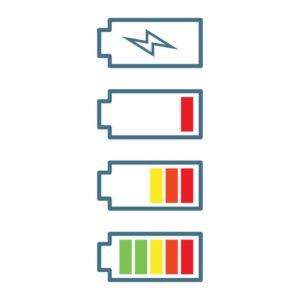Batteries and Energy Harvesting for IoT Sensors


 Often an afterthought, batteries are an important power source for IoT sensors. Without a battery, some sensors would not be able to gather and transmit data. When sensors are placed in remote locations in a factory or facility, easy access to an electrical outlet is not always feasible. In these situations, most sensors use a battery to allow independent operation.
Often an afterthought, batteries are an important power source for IoT sensors. Without a battery, some sensors would not be able to gather and transmit data. When sensors are placed in remote locations in a factory or facility, easy access to an electrical outlet is not always feasible. In these situations, most sensors use a battery to allow independent operation.
However, when most companies are planning an IoT implementation, the impact of battery life and sensor locations on the overall cost of the implementation is underestimated. Hard to reach sensors require additional, expensive labor to replace batteries, so reducing or eliminating the need to replace batteries results in an overall more cost-effective solution.
Energy harvesting is a technique used to power IoT sensors by collecting energy from the environment, such as sunlight, heat, vibration, or radio waves. It can help to extend the lifetime of the battery in the sensor and reduce the need for maintenance. Examples of energy harvesting for sensors includes:
It is important to note that, depending on the type of sensor and its location, energy harvesting may not be a feasible option for all IoT sensors.
Energy harvesting can have an impact on the size of an IoT sensor, depending on the type of energy harvesting method used.
Overall, it is important to consider the trade-offs between size, cost, and energy efficiency when implementing energy harvesting in an IoT sensor.
At Embedded Planet, we have worked to solve the ever present question of how to power remote sensors without the need to replace batteries and, in some cases, without the need for batteries at all. With energy harvesting, we can apply the appropriate technology – solar, thermoelectric, RF, or vibration – to ensure that there is never a need for the user to replace or recharge the battery.
For some applications, the battery-less approach can be taken. EP has demonstrated sensor applications that do not require a battery and are powered solely by energy harvested from the environment.
Contact our engineers to find out how to get more about our innovative energy harvesting sensor capabilities.













